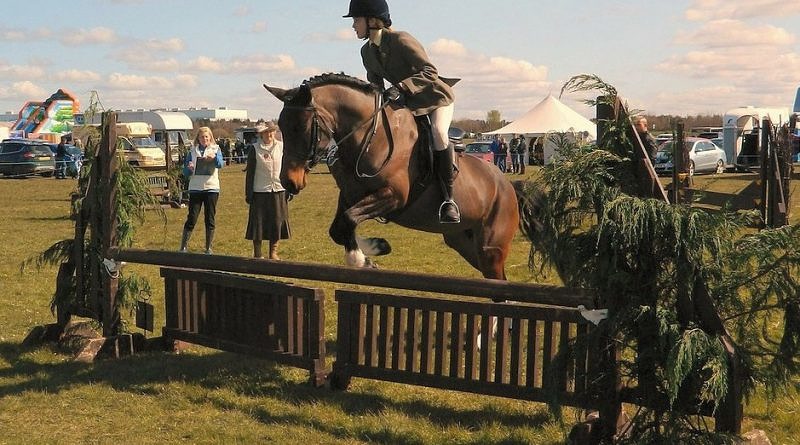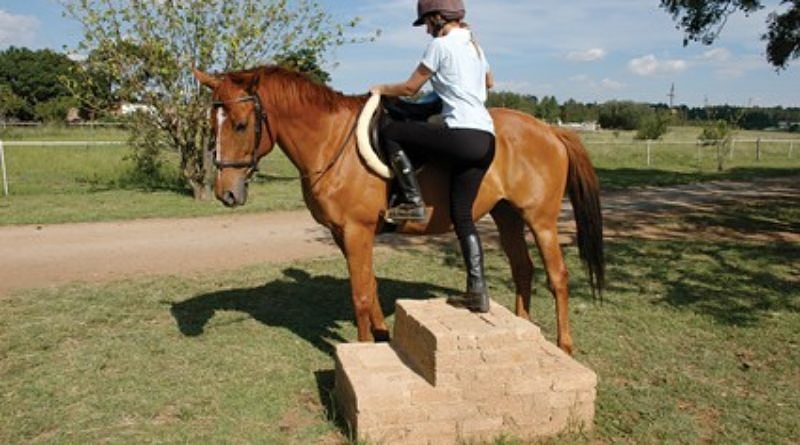Dressage for Jumping – Part 3
Dressage principles can help you and your horse excel in any jumping discipline. Here are just some of the ways in which all that flatwork pays off!
People are always quick to point out the many horses – and riders – with unorthodox form or equitation who have been very successful over the years. Textbook form isn’t necessary to do well by any means – but for mere mortals like us, it can certainly help to refine our technique!
Symmetry
Just like us, horses are born with asymmetries. These may be anything from a preference for one side over the other (like human handedness) to a physical difference such as a club foot. Whatever the case, horses will adjust their movements in ways that reflect these differences. For instance many horses have a canter lead preference. Often early asymmetries become compounded as horses compensate or preferentially use certain muscles over others.
Dressage can help to gradually reduce the effect of these asymmetries or even get rid of them altogether. A horse that can do things equally well on both sides is a horse that can jump more reliably – with improved bending on both sides, better and more reliable lead changes, less chance of hanging a leg and knocking a pole, better balance at take-off and landing, and so on!
So if you find that your horse struggles with being equally responsive on both reins, consider that the underlying cause may be your horse’s – or your own for that matter – natural asymmetry. A careful program of flatwork exercises can, over time, counter these issues.
More stretching!
It may seem like stretching your horse during schooling is just an opportunity to give them a break from the ‘real’ work. But in actual fact, stretching is very important in terms of physical development as well! Promoting flexibility means your horse will be more mobile and able to make a better shape over a fence. Tight, tense muscles are also more likely to be injured so allowing your horse to stretch and relax between movements can help them remain healthy and sound. When done systematically stretching can, over time, extend the limits of your horse’s range of motion and isn’t just an ‘easy break’.
However, stretching and lengthening as a ‘break’ also serves an important function. Like us, horses need to take a break from hard work from time to time in order to remain positive and willing. Punctuating your schooling with relaxed stretching guided by your horse can really help prevent small resistances and keep your horse comfortable. It can be tempting to push for more when your horse is performing their best but this is actually the perfect time to stop and allow the horse to relax and lengthen through their body for a little while, before resuming more intense activity.
Pushing boundaries at an appropriate pace
Schooling is often about pushing the physical limits of the equine athlete a tiny bit at a time. Working with what talent a horse has ‘naturally’, we can slowly shape their abilities so they can perform at a higher level. Doing this at an appropriate pace for the individual horse and making sure that the physical and psychological foundations are good enough before moving on is very important to ensure the horse stays sound and happy.
If your horse struggles with tucking their legs and has a tendency to knock poles for example, working on their suppleness could be just the thing to get them snapping their legs up with ease. Horses don’t want to knock poles so if they have the physical ability to easily avoid doing so, they will! But how ‘easy’ it is for them is very important. If what we’re asking of them is at the edge of their ability, they may decide it isn’t worth the effort and be less consistent to ride.
By nurturing correct physical development through good schooling practices, we can produce a horse that is physically capable of performing whatever task we want, including jumping. Successful training is about doing two things: teaching the horse what we want and ensuring that they are physically capable of doing it. If a horse understands what we’re trying to communicate and their capabilities easily match or exceed what we want, problems are far less likely to arise. A horse that is confused or is performing at the very edge of their ability is far more likely to become frustrated, tired, lose confidence, and begin to worry and resist the work. This is why it’s so useful to work on the flat first and address each little aspect of a horse’s training in that more basic context – before demanding more of them over fences where we might end up asking for too much all at once and overwhelm them.
To read more about dressage for jumping, see part 1 and part 2.







